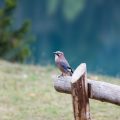Introduction to Loch Lomond & The Trossachs National Park
Nestled in the heart of Scotland, Loch Lomond & The Trossachs National Park stands as a breathtaking testament to the countrys natural beauty and rich heritage. Situated just north of Glasgow and stretching into the southern Highlands, the park encompasses dramatic landscapes that include tranquil lochs, rugged hills, ancient woodlands, and charming villages. As Scotland’s first national park, established in 2002, it covers over 720 square miles and offers a diverse playground for outdoor enthusiasts. Its unique blend of highland and lowland scenery provides endless opportunities for exploration and discovery. Whether you’re a seasoned rambler or a family seeking gentle strolls, this park is rightly celebrated as a walker’s paradise by both locals and visitors. From serene lochside paths to challenging hill climbs, Loch Lomond & The Trossachs boasts trails suited for every ability, making it an essential destination for anyone looking to experience the very best of Scotland’s wild spaces.
Accessible Trails for All: Family and Easy Walks
Loch Lomond & The Trossachs National Park is celebrated for its breathtaking landscapes, but what truly sets it apart is its commitment to inclusivity. The park offers a range of gentle, well-maintained paths that are ideal for families with young children, those new to walking, or visitors seeking barrier-free access. Many of these routes have been thoughtfully designed to ensure everyone can enjoy Scotland’s wild beauty without unnecessary obstacles. Below, you’ll find a table highlighting some of the most accessible trails in the park, complete with local tips to make your visit as smooth as possible.
Top Accessible Trails in Loch Lomond & The Trossachs
| Trail Name | Location | Distance | Path Surface | Accessibility Features |
|---|---|---|---|---|
| West Loch Lomond Cycle Path | Balloch to Tarbet | 27km (choose sections) | Paved/compacted gravel | Wheelchair & buggy friendly; level stretches; benches along route |
| The Lodge Forest Visitor Centre Walks | Aberfoyle | Various (0.5km–4km) | Wide, surfaced paths | Accessible toilets; step-free loops; sensory garden |
| Luss Heritage Trail | Luss Village | 1.5km circuit | Paved and boardwalk sections | Level access throughout; riverside views; disabled parking nearby |
| Ballon Pier Circular Path | Balloch | 1.5km circular | Paved path | Smooth surface; suitable for prams and wheelchairs; close to amenities |
Local Accessibility Tips
- Most visitor centres offer RADAR keys for accessible toilets—ask at reception on arrival.
- Larger car parks at Balloch and Aberfoyle provide designated blue badge parking spaces close to trailheads.
- If you’re using public transport, buses to Balloch and Luss are wheelchair accessible and stop near major trail entrances.
A Note on Weather & Surfaces
Scottish weather can be unpredictable, so waterproofs and sturdy shoes are always wise—even on easy walks. While most listed paths are well-drained, some may become muddy after rain, so check local conditions before setting off. With thoughtful planning and these accessible routes, Loch Lomond & The Trossachs ensures everyone can experience the tranquillity and grandeur of this beloved national park.

3. Moderate Walks: Experiencing Classic Scottish Scenery
If you’re seeking that perfect middle ground between gentle strolls and strenuous hikes, Loch Lomond & The Trossachs National Park offers a wealth of moderate routes. These trails are ideal for ramblers who relish a bit of elevation and the reward of classic Highland vistas, without requiring advanced hillwalking skills.
Conic Hill
Situated near Balmaha, the Conic Hill walk is an iconic choice for walkers looking to experience breathtaking views over Loch Lomond. The trail climbs steadily through woodland before breaking out onto open hillside, offering panoramic scenes that epitomise Scotland’s rugged beauty. At around 4km return, with well-defined paths and manageable gradients, it’s a rewarding challenge for most abilities.
Ben A’an
Known as ‘the mountain in miniature’, Ben A’an is a popular peak in The Trossachs that provides a satisfying ascent and superb summit views across Loch Katrine and surrounding hills. The route is approximately 4km return with a steady but not overwhelming climb, making it suitable for keen walkers who want a taste of classic Scottish hillwalking without committing to a full day on the fells.
The Cobbler (Ben Arthur) Lower Path
While the summit of The Cobbler is reserved for experienced scramblers, the lower path up Glen Croe offers moderate walkers a flavour of this dramatic landscape. This route follows good tracks through glen and forest, climbing gradually to provide stirring views of the Arrochar Alps. It’s an excellent choice if you fancy stretching your legs while soaking up classic Highland scenery.
Tips for Enjoying Moderate Walks
Remember to wear sturdy footwear and pack for changeable weather—this is Scotland, after all. Many moderate trails here are well-marked but can be muddy or rocky in places. Bring snacks and water, take your time on steeper sections, and don’t forget your camera: these walks offer some of the best photo opportunities in the park.
4. Adventurous Routes: Trails for Seasoned Walkers
For those who relish a challenge and are keen to experience the wilder side of Loch Lomond & The Trossachs National Park, there are a number of demanding trails that traverse rugged landscapes, lofty summits, and remote glens. These routes offer seasoned walkers the opportunity to test their mettle while soaking in some of Scotland’s most spectacular scenery. However, venturing onto these advanced paths requires careful planning and respect for the unpredictable Scottish weather.
Top Challenging Walks
| Trail Name | Distance | Elevation Gain | Key Features |
|---|---|---|---|
| Ben Lomond Summit Path | 12 km (return) | 990 m | Stunning views over Loch Lomond; popular Munro peak |
| The Cobbler (Ben Arthur) | 11 km (loop) | 870 m | Dramatic rock formations; challenging scramble sections |
| Beinn Ime via Arrochar Alps | 15 km (loop) | 1,010 m | Highest peak in the park; panoramic vistas; rough terrain |
| Benvane Ridge Walk | 18 km (loop) | 1,100 m | Remote ridgeline; rewarding solitude and birdlife |
Navigational Skills & Safety Tips
Tackling these challenging walks requires more than sturdy boots. It’s essential to be equipped with a detailed OS map and compass, as mobile signal can be patchy in remote areas. Weather conditions in the Highlands change rapidly—always check the forecast before heading out and pack waterproofs, extra layers, and sufficient food and water. Let someone know your route and expected return time, especially if walking solo.
A Few Words on Mountain Etiquette
Respecting the environment is paramount: stick to established paths where possible to minimise erosion, carry all litter home, and observe the Scottish Outdoor Access Code. In busier months, consider starting early or choosing less trodden routes to enjoy greater solitude and protect the natural landscape from overtourism.
5. Wildlife, Flora, and Conservation
Loch Lomond & The Trossachs National Park is a haven for biodiversity, offering visitors the chance to encounter some of Scotland’s most iconic species in their natural habitats. From the red deer grazing in woodlands to the elusive pine marten and the soaring golden eagle above rugged hills, wildlife spotting here can be a highlight for any rambler or nature lover.
Native Flora: A Tapestry of Colour
The park’s varied landscapes support a rich array of native plant life. Ancient oakwoods drape the lochside slopes, while carpets of bluebells burst into colour each spring. In higher elevations, you’ll find heather moorland and rare alpine plants clinging to rocky outcrops. The boggy wetlands nurture insectivorous sundews and orchids, rewarding those who tread lightly and observe closely.
Conservation Initiatives
Preserving this natural heritage is a central focus for the park authorities and local communities. Ongoing projects include peatland restoration, habitat creation for endangered species such as the Scottish wildcat, and invasive species management. Visitors can learn about these efforts at visitor centres or through guided walks led by knowledgeable rangers.
Responsible Enjoyment of Nature
To ensure Loch Lomond & The Trossachs remains unspoilt for future generations, it’s vital to follow the Scottish Outdoor Access Code. Stick to marked trails to minimise disturbance to wildlife and fragile habitats, take all litter home, and keep dogs under control during nesting season. For those keen on wild camping, choose your spot with care and leave no trace behind. By respecting these guidelines, everyone can enjoy the park’s wonders while playing a part in their protection.
6. Practical Information and Local Tips
Getting There and Getting Around
Loch Lomond & The Trossachs National Park is well-connected by both road and rail. If you’re coming from Glasgow or Edinburgh, regular trains run to Balloch, the gateway village at the southern tip of Loch Lomond. Buses also serve many of the park’s main towns, such as Callander and Aberfoyle. For more remote trails, a car can be handy, but don’t overlook local taxis or community-run minibus services that can help you reach less accessible starting points.
Weather: Be Prepared for Anything
Scottish weather is famously unpredictable—even in summer, it’s wise to expect four seasons in a day. Always check the forecast before heading out, but bring waterproofs, extra layers, and sturdy footwear regardless. Midge season (typically May to September) calls for insect repellent if you’re venturing into wooded or boggy areas.
Kit Essentials for All Abilities
A good pair of walking boots is invaluable on both easy paths and more challenging climbs. Even on accessible trails, surfaces can be uneven or muddy after rain. Bring a map—either OS Explorer OL39 or an app with offline capabilities—as phone signals are patchy in parts. Don’t forget water, snacks, and a reusable cup if you fancy picking up a hot drink along the way.
Local Customs and Public Rights of Way
The Scottish Outdoor Access Code gives everyone the right to roam responsibly across most land and inland water. Stick to marked paths where possible, close gates behind you, keep dogs under control around livestock, and always leave no trace. A friendly “hello” is customary when passing fellow walkers—don’t be shy!
Where to Refuel: Tea Rooms and Eateries
After your walk, nothing beats a proper cuppa or hearty meal. In Balloch, try one of the cosy tearooms along the lochside for scones and tea. Callander’s high street offers bakeries and pubs serving classic Scottish fare like Cullen skink or haggis. For something sweet, Aberfoyle’s cafes do a cracking homemade cake. Many spots welcome muddy boots—and even four-legged friends.


